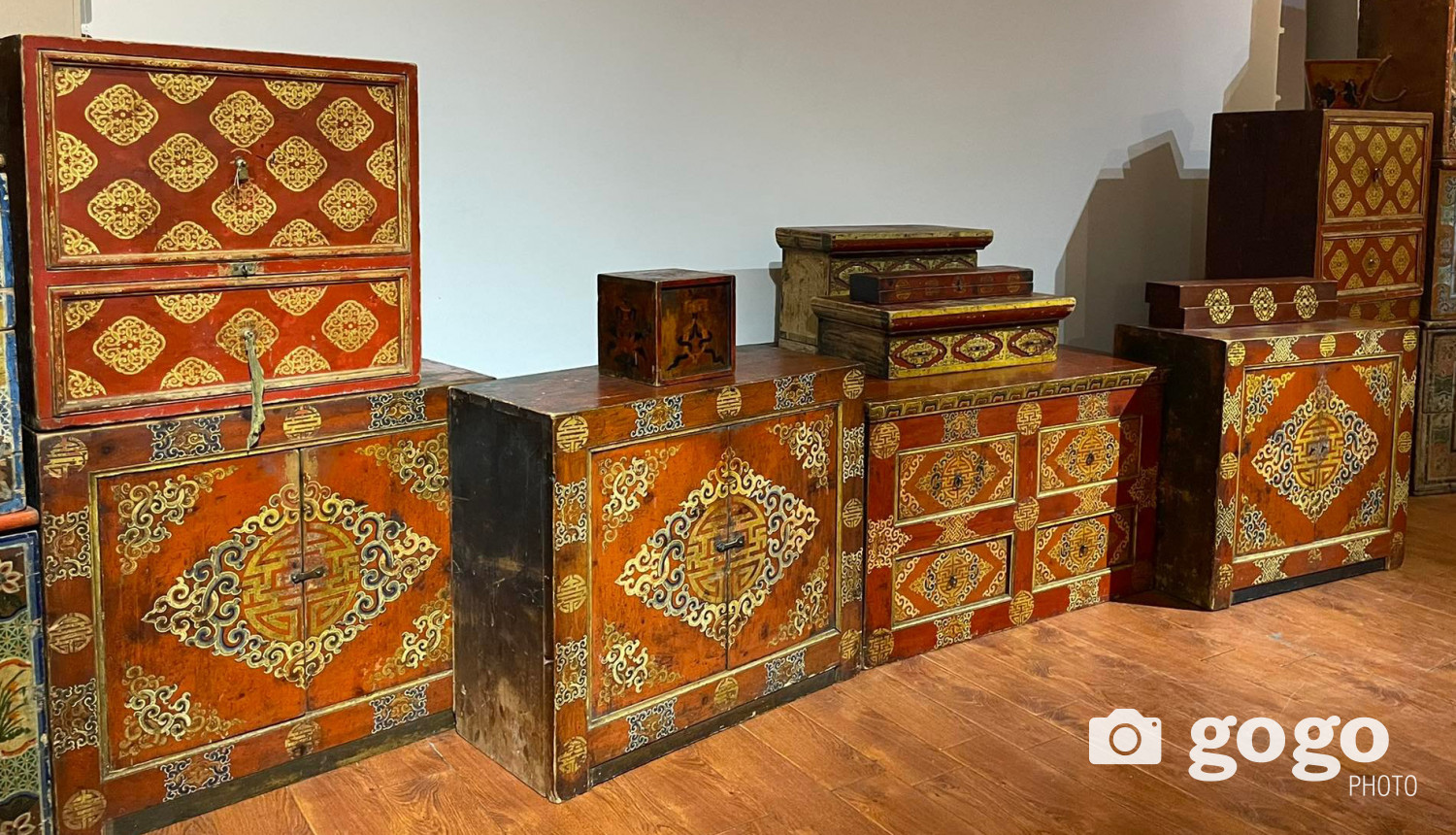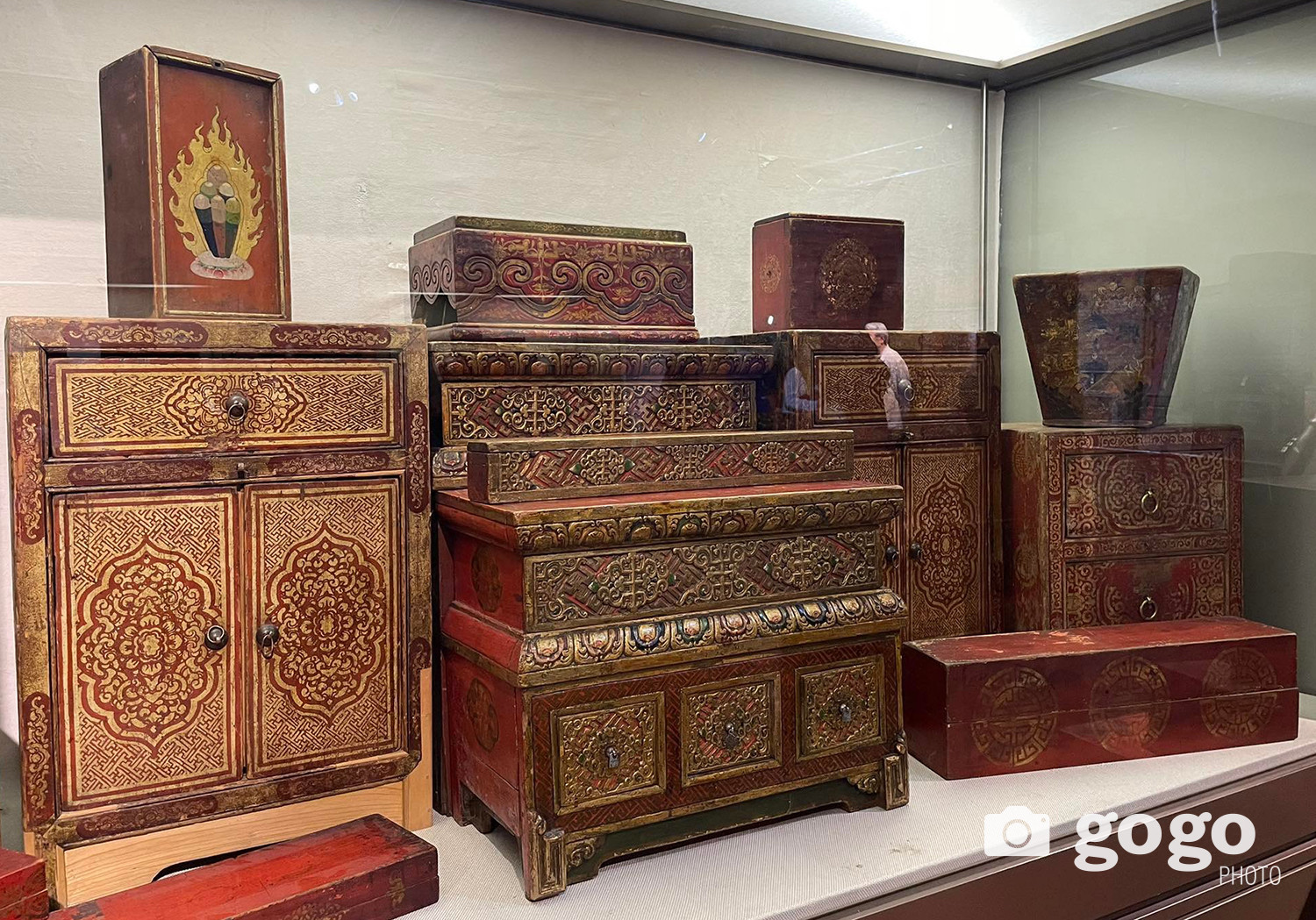The “Mongolian Crafts and Wooden Chest” exhibition opened at the National Museum of Mongolia on June 13. The exhibition features more than 150 chests used by Mongolians in the XVII-XX centuries. These wooden chests, the cultural heritage of the nomadic Mongols, contain Mongolian traditions and philosophies of life. Wooden chests have been considered the most widely used piece of furniture in the Mongolian ger.
In addition, Chinese and Tibetan chests for trade and aristocratic awards were displayed in the exhibition added to the well-known Mongolian chests used in the XVII-XX centuries.
Studies have shown that the chest was originally intended for storing household items, but gradually became a piece of furniture, and a drawer was created to categorize what was stored in the box. An integral part of the chest was a drawer.

In the XVII-XX centuries, chests were created based on traditional Mongolian uses. The tea chest was first introduced based on the tradition of crafting willow. Currently, we have one tea chest. Tea was the main means of trade, so tea was preferred and packed in willow chests and transported, which is now one of the rare exhibits in O.Mashbat's collection.
Since lions are considered to be the most powerful animals in the world, Mongolians have long believed that they draw lions in their chests and protect them. Starting from 1920, traditional lion-shaped chests with a variety of patterns and colors were introduced to the public. The Tibetans introduced leather chests.

MONGOLIAN CHESTS ARE VERY RELIABLE DUE TO NO NAILS AND STICK ONLY
O.Mash-Erdene, a founder of Mongolian Ethnographic Ger Museum, said, “Mongolians used to place their wooden chests in the back of their homes to store the most precious things, such as silk, and deels, so the chest was filled with the virtues of the elders. The main idea of making this exhibition available to the public is to help children and young people learn about their heritage and to see the chests used by their ancestors at the exhibition”.
-Why did you start collecting chests?
-Because I collect ethnographic artifacts, and I am interested in antique shops. In the early 2000s, 3-4 Chinese men were sitting in an antique shop and saying “The wagon will be full if we find 30 more chests”. I asked about it from the salesman after they left and the salesman said, “The Chinese Government is financing to build 100 ger museums in Inner Mongolia”. At that time, wooden products were exported free of customs duties. Then I started collecting chests with the feeling that Mongolia would lose all chests. There are now more than 300 chests in my collection.
Mongolians started living in apartments and chests are almost not used in the apartments. The role of the chest was replaced by a variety of modern drawers, and the wooden chests, which had been used by their ancestors for many years, began to be discarded.

From this time, O.Mash-Erdene saw the wooden chest as an important ethnographic tool of the Mongols, and began to collect them, so that it would not be lost to foreigners.
He said, “Some people give their chests for free with a reason that children said to throw it. In December 2000, two tourists from Spain came to see a Mongolian wooden chest. "Mongolian chest costs EUR 1,300-1,500 in Spain" they said. When they showed the picture of the Mongolian chest, they were all Chinese made chest. The Chinese did business using the Mongolian name. At that time, I thought that if a chest was made under the name of Mongolia, it would be known in the world.
-What are the main features of the design of the Mongolian chest?
-There are no nails in the Mongolian chest. Because it sticks to each part. If it has nails, it will fall out during the movement. Also, the chest has handles on both sides, which means that it is convenient to load and carry.
-Recently, artisans have started to make chests. Do Mongolians seem to be interested in using the chest again?
-Young people know their heritage and are now interested in wooden chests. It is important to use. It makes sense to use it at home and introduce it to household use. It doesn't make sense to put up a chest as a souvenir. Mongolians wipe the corners of the chests with their oily hands after they eat meat, and the chest is colored with oil. When the wooden chest is wiped with broth oil, the pattern is clearly visible.
Many young people came to see the exhibition. They are asking collectors about the meaning of the chest’s design. As O.Mash-Erdene said before, a young man pointed to a chest and said, "My grandmother had such a chest". The “Mongolian Crafts and Wooden Chest” exhibition will be open at the National Museum of Mongolia until October.
The “Mongolian Crafts and Wooden Chest” exhibition opened at the National Museum of Mongolia on June 13. The exhibition features more than 150 chests used by Mongolians in the XVII-XX centuries. These wooden chests, the cultural heritage of the nomadic Mongols, contain Mongolian traditions and philosophies of life. Wooden chests have been considered the most widely used piece of furniture in the Mongolian ger.
In addition, Chinese and Tibetan chests for trade and aristocratic awards were displayed in the exhibition added to the well-known Mongolian chests used in the XVII-XX centuries.
Studies have shown that the chest was originally intended for storing household items, but gradually became a piece of furniture, and a drawer was created to categorize what was stored in the box. An integral part of the chest was a drawer.

In the XVII-XX centuries, chests were created based on traditional Mongolian uses. The tea chest was first introduced based on the tradition of crafting willow. Currently, we have one tea chest. Tea was the main means of trade, so tea was preferred and packed in willow chests and transported, which is now one of the rare exhibits in O.Mashbat's collection.
Since lions are considered to be the most powerful animals in the world, Mongolians have long believed that they draw lions in their chests and protect them. Starting from 1920, traditional lion-shaped chests with a variety of patterns and colors were introduced to the public. The Tibetans introduced leather chests.

MONGOLIAN CHESTS ARE VERY RELIABLE DUE TO NO NAILS AND STICK ONLY
O.Mash-Erdene, a founder of Mongolian Ethnographic Ger Museum, said, “Mongolians used to place their wooden chests in the back of their homes to store the most precious things, such as silk, and deels, so the chest was filled with the virtues of the elders. The main idea of making this exhibition available to the public is to help children and young people learn about their heritage and to see the chests used by their ancestors at the exhibition”.
-Why did you start collecting chests?
-Because I collect ethnographic artifacts, and I am interested in antique shops. In the early 2000s, 3-4 Chinese men were sitting in an antique shop and saying “The wagon will be full if we find 30 more chests”. I asked about it from the salesman after they left and the salesman said, “The Chinese Government is financing to build 100 ger museums in Inner Mongolia”. At that time, wooden products were exported free of customs duties. Then I started collecting chests with the feeling that Mongolia would lose all chests. There are now more than 300 chests in my collection.
Mongolians started living in apartments and chests are almost not used in the apartments. The role of the chest was replaced by a variety of modern drawers, and the wooden chests, which had been used by their ancestors for many years, began to be discarded.

From this time, O.Mash-Erdene saw the wooden chest as an important ethnographic tool of the Mongols, and began to collect them, so that it would not be lost to foreigners.
He said, “Some people give their chests for free with a reason that children said to throw it. In December 2000, two tourists from Spain came to see a Mongolian wooden chest. "Mongolian chest costs EUR 1,300-1,500 in Spain" they said. When they showed the picture of the Mongolian chest, they were all Chinese made chest. The Chinese did business using the Mongolian name. At that time, I thought that if a chest was made under the name of Mongolia, it would be known in the world.
-What are the main features of the design of the Mongolian chest?
-There are no nails in the Mongolian chest. Because it sticks to each part. If it has nails, it will fall out during the movement. Also, the chest has handles on both sides, which means that it is convenient to load and carry.
-Recently, artisans have started to make chests. Do Mongolians seem to be interested in using the chest again?
-Young people know their heritage and are now interested in wooden chests. It is important to use. It makes sense to use it at home and introduce it to household use. It doesn't make sense to put up a chest as a souvenir. Mongolians wipe the corners of the chests with their oily hands after they eat meat, and the chest is colored with oil. When the wooden chest is wiped with broth oil, the pattern is clearly visible.
Many young people came to see the exhibition. They are asking collectors about the meaning of the chest’s design. As O.Mash-Erdene said before, a young man pointed to a chest and said, "My grandmother had such a chest". The “Mongolian Crafts and Wooden Chest” exhibition will be open at the National Museum of Mongolia until October.

